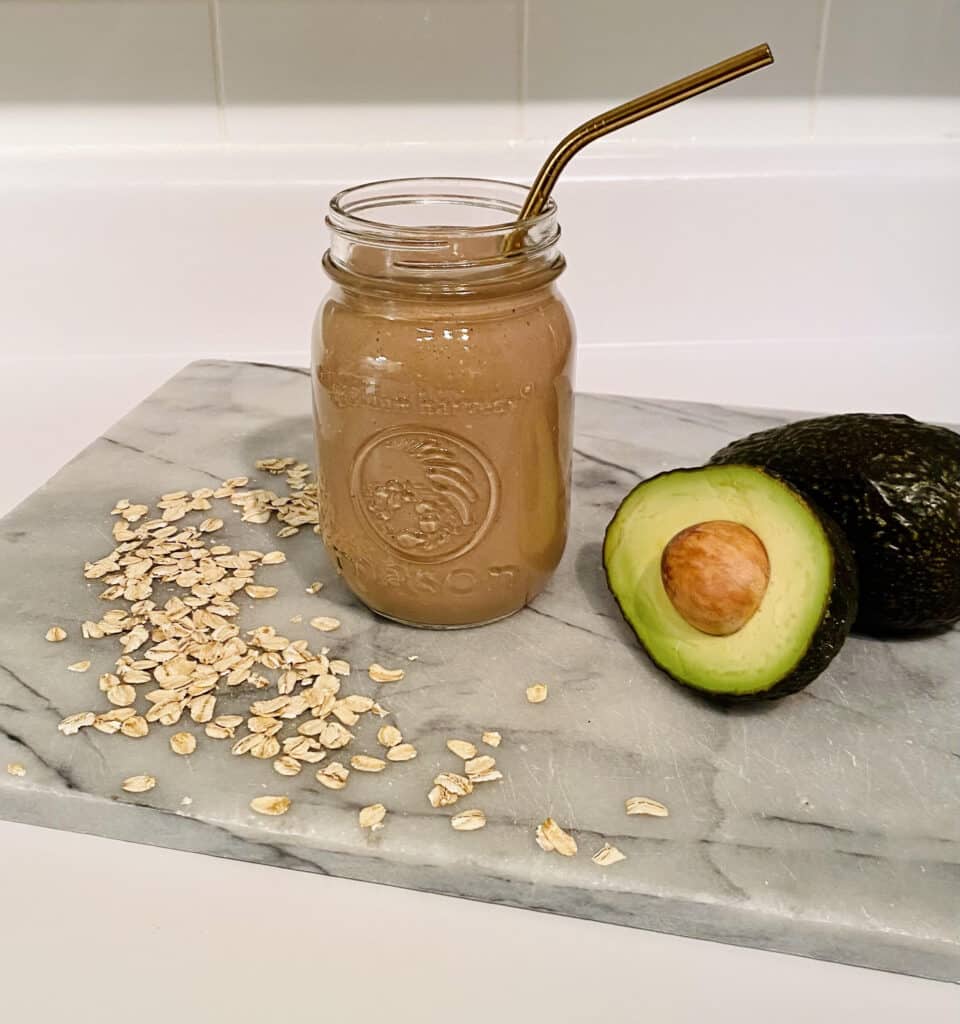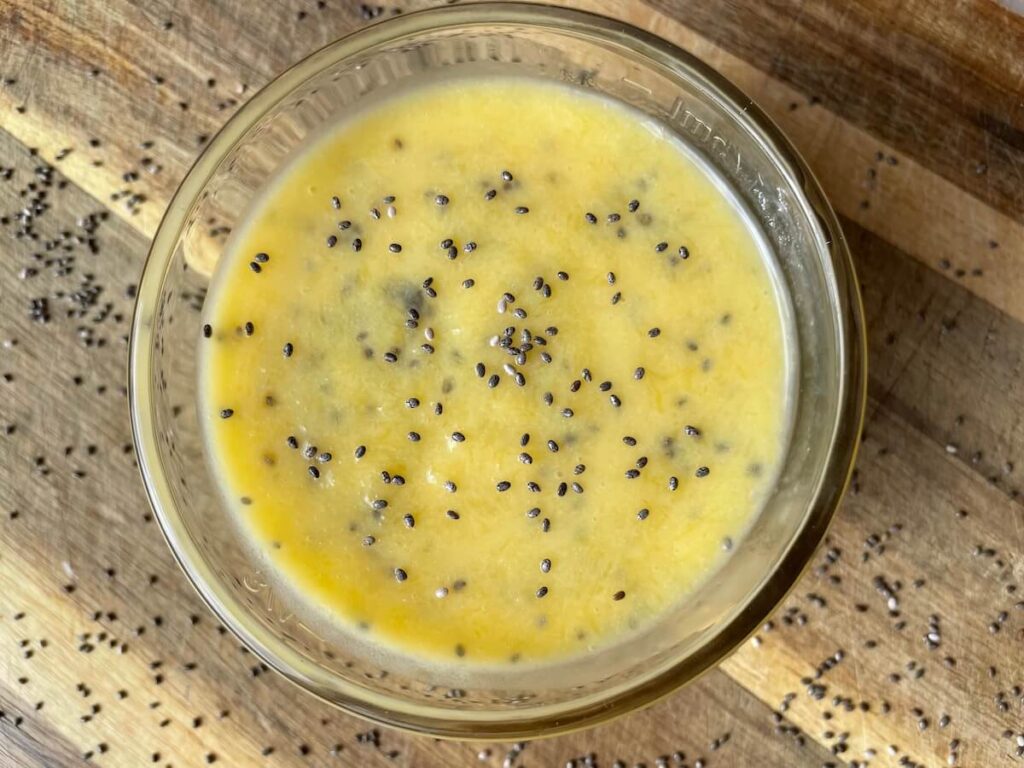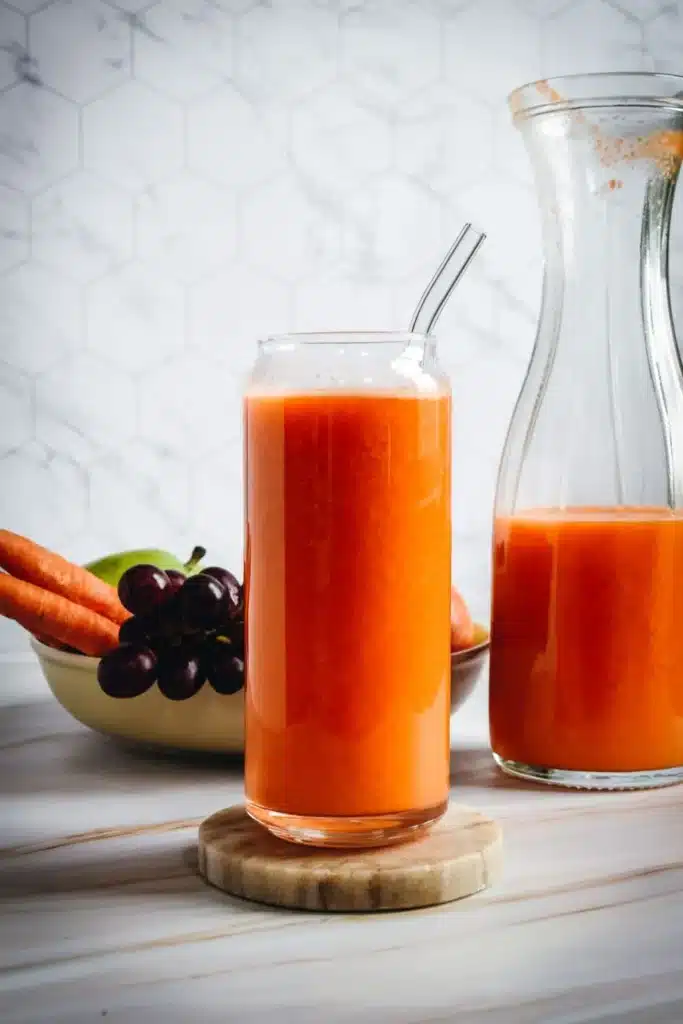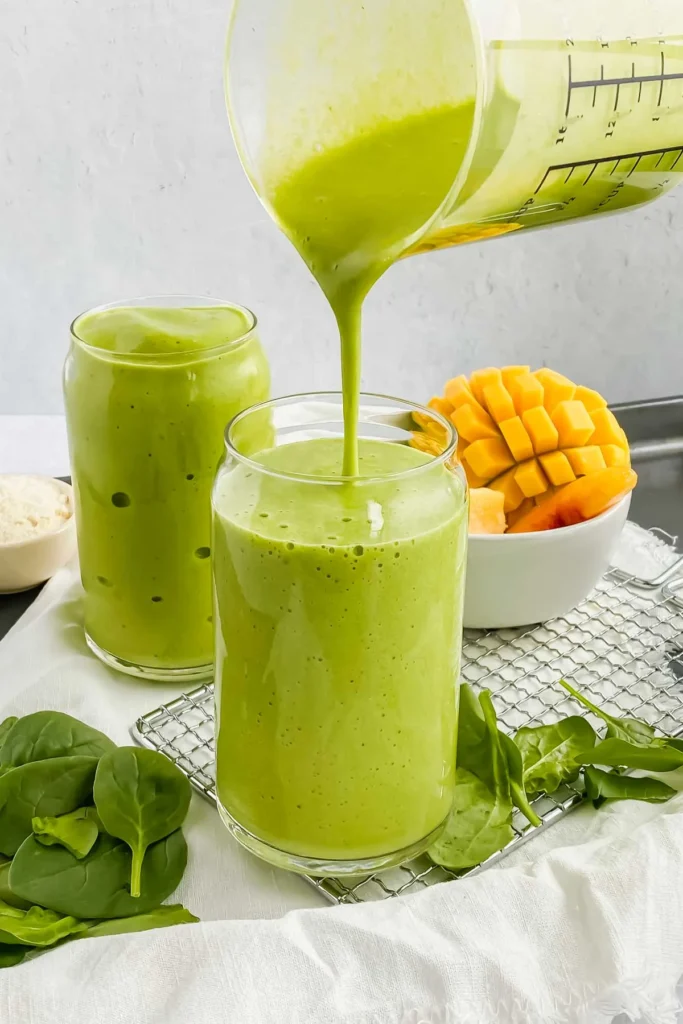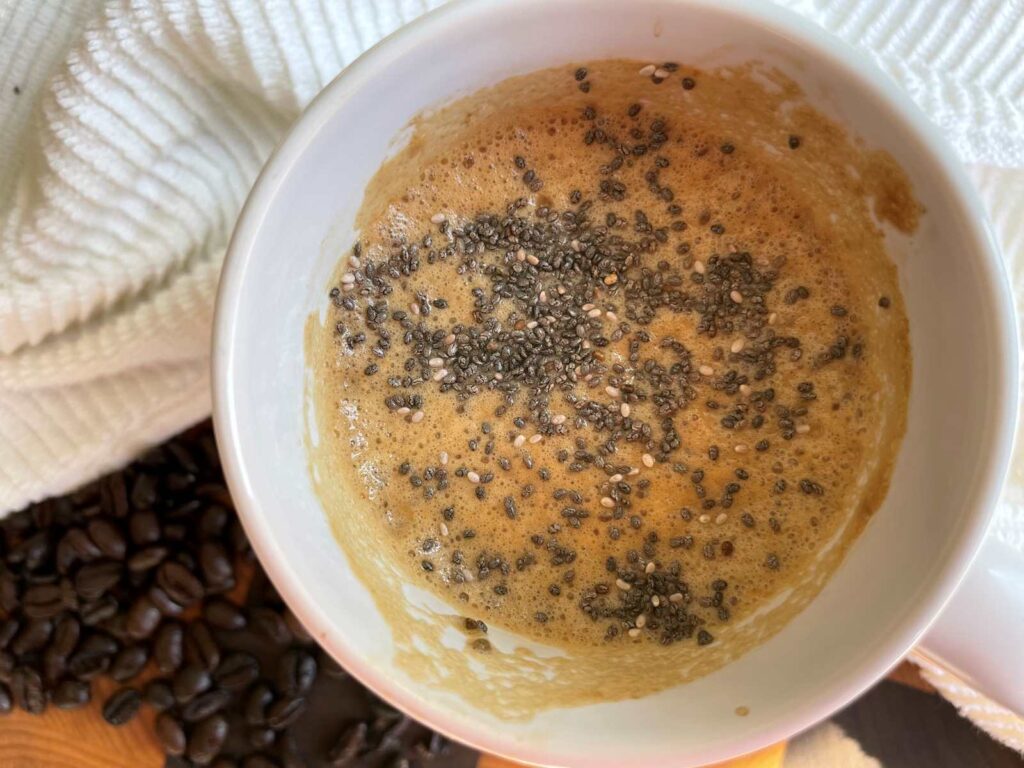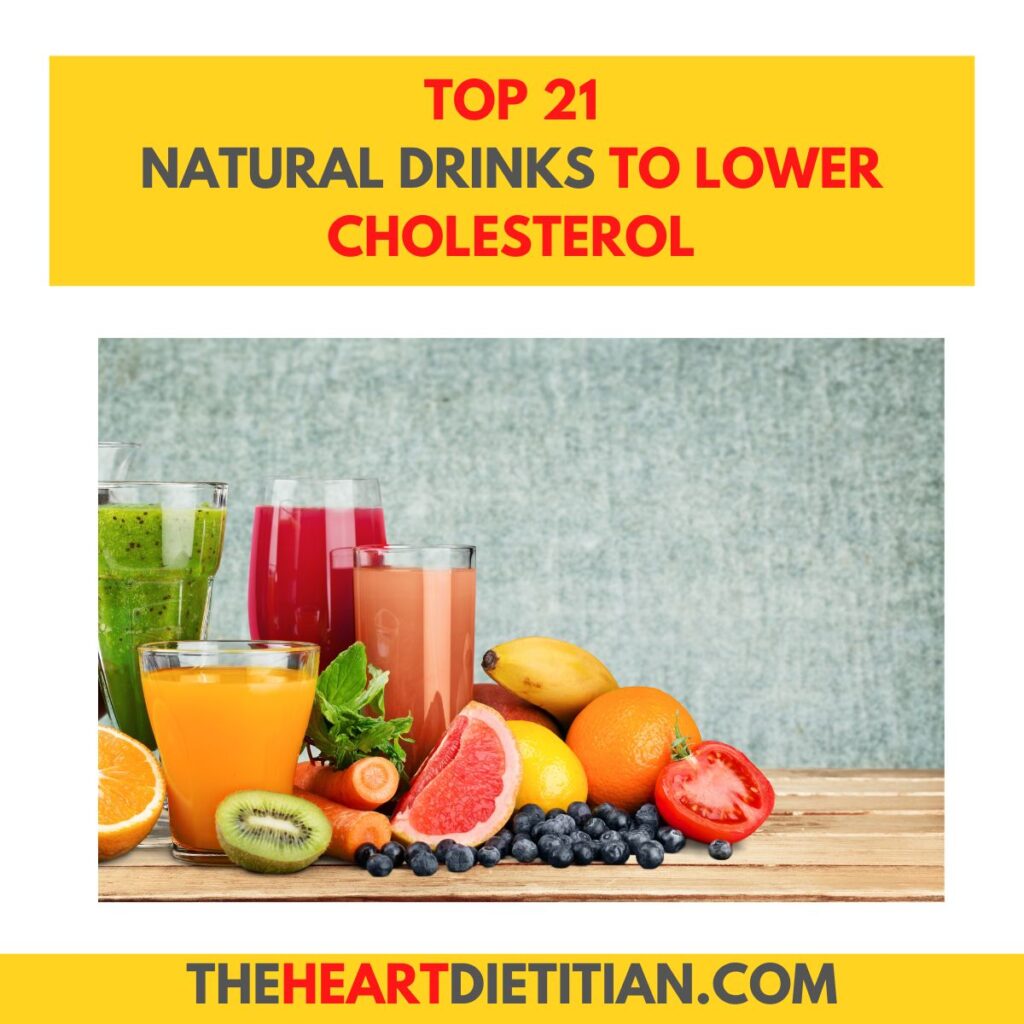Cholesterol is important for our health, but too much of it can be bad for our heart. Eating the right foods and drinks can help lower cholesterol. Thus, this article goes over the best tea for lowering cholesterol and answers the question: can tea lower cholesterol?
This article focuses on how adding tea to your diet can help manage cholesterol in addition to the recommended diets such as the Mediterranean Diet, The DASH diet, and the Portfolio diet.
Key Takeaways
- Cholesterol can be categorized into two types: LDL cholesterol is harmful, leading to arterial plaque, while HDL cholesterol is protective. Excess cholesterol can cause heart issues.
- Certain teas rich in antioxidants and polyphenols can help manage cholesterol levels by inhibiting LDL oxidation, promoting lipid metabolism, and reducing cholesterol absorption.
- Some of the top teas for lowering cholesterol include:
- Green Tea: Rich in catechins, lowers LDL cholesterol and boosts HDL cholesterol.
- Oolong Tea: Promotes lipid metabolism, aiding weight reduction.
- Black Tea: Contains polyphenols that lower LDL cholesterol and influence fat metabolism.
- Pu-erh Tea: Fermented tea containing lovastatin, reduces LDL cholesterol.
- Hibiscus Tea: Reduces total and LDL cholesterol due to antioxidants.
- Turmeric, Ginger, Peppermint, Fenugreek, and Holy Basil Teas: Each offers unique cholesterol-lowering properties.
- Moderation of tea consumption is important due to caffeine content. Consult healthcare providers before significant dietary changes, especially when on medication or with existing health conditions. Lifestyle changes complement tea consumption for optimal cholesterol management and heart health.
Understanding Cholesterol
So what is Cholesterol?
Cholesterol is a compound produced naturally in the liver with a waxy fat-like consistency (1). Cholesterol plays a vital role in the body, such as making hormones, helping build cells and producing vitamin D (1).
While that is said, the body only requires a small amount to perform such functions, and too much cholesterol can lead to heart attack, PAD, and stroke (1).
Cholesterol can be categorized into two types:
- LDL, which is bad cholesterol (also known as low-density lipoprotein)
- HDL, which is good cholesterol (also known as high-density lipoprotein).
So, what is the difference between the two?(1)
LDL cholesterol is known as the bad or unhealthy cholesterol as it leads to the buildup of fatty deposits (plaque) in the arteries (2).This buildup contributes to the narrowing of your arteries and, therefore, increases your risk for developing cardiovascular disease (2).
On the other hand, HDL cholesterol is known as good or healthy cholesterol as it acts as a protective factor against heart disease, heart attacks, and stroke (2).
How does it do this? HDL transports the unhealthy cholesterol found throughout the body to the liver, where it can be broken down and excreted out as waste (2).

The Role Of Tea In Cholesterol Management
Keeping our cholesterol in check is key for a healthy heart and body. But can tea lower cholesterol?
Yes, some teas can help with this, thanks to their special ingredients. These ingredients include polyphenols and antioxidants, which are also found in many healthy foods, like this list of anti-inflammatory foods .
Teas are packed with compounds like polyphenols that are great for our health. They include phenolic acids, flavonoids, tannins, terpenoids and phytosterols. The amounts of these compounds in teas vary depending on how the tea is made and where it’s from (3).
A special group of these flavonoids, called catechins, are especially good for us. They include substances like epicatechin (EC) and epigallocatechin gallate (ECG), epigallocatechin (EGC) and epigallocatechin gallate (EGCG) which have lots of health benefits, such as reducing inflammation and helping manage fat in our bodies (3).
Many studies have cited the positive benefits of consuming tea polyphenols in antioxidant activity, anti-inflammatory properties, and regulating lipid metabolism within the body (4).
In short, cholesterol lowering tea is a result of consuming these catechins. They’re a big reason why tea can be a simple and tasty way to help keep our cholesterol levels healthy.
Best Tea For Lowering Cholesterol
Ready for the list of teas for lowering cholesterol?
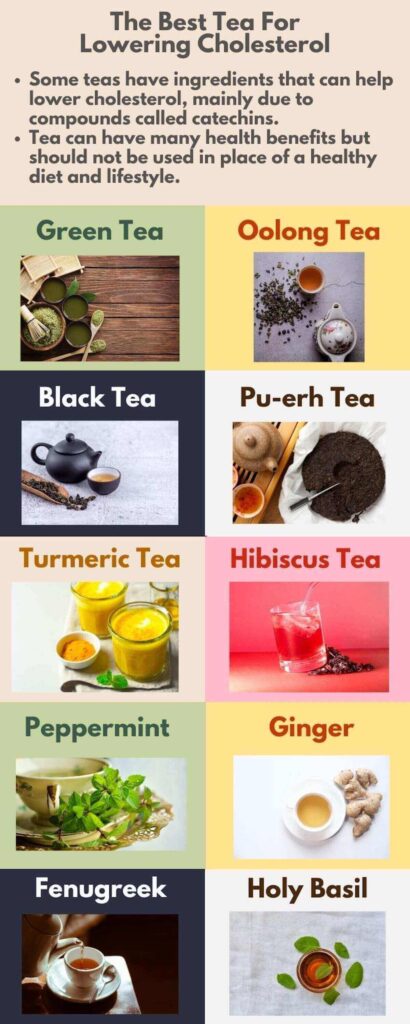
Green Tea
You might be familiar with the name Green Tea.
It is one of the most popular types of tea worldwide and for a good reason! Of all types of teas, green tea contains more polyphenols, specifically catechins, than other teas (6).
You might be wondering, what does an antioxidant do? Antioxidants help fight against molecules called free radicals, which are responsible for cell damage found within the body (7).
These antioxidants look for free radicals circulating in the body, preventing them from forming and, therefore, reducing and or preventing potential harm these molecules can cause to your cells (7).
Research Studies
Recent animal studies looking at the relationship between the consumption of green tea and cholesterol levels in rats, showed that on a high-fat diet there were reductions in total cholesterol, triglycerides and LDL cholesterol (8).
In addition, these studies found that the catechins within green tea could increase HDL (good) cholesterol, reduce plaque buildup in the arteries and decrease fat buildup in the liver (8).
As previously mentioned, green tea contains a higher concentration of catechins compared to other teas.
Research has shown that these catechins act as powerful antioxidants that inhibit the oxidation of LDL cholesterol, a chemical reaction that leads to the buildup of cellular deposits in the blood vessel walls, contributing to plaque (8).
Types Of Green Tea
Now, there are many types of green teas and you might be wondering, how do they compare in terms of antioxidant quantity? Most grocery stores carry green tea in three varieties: bagged, loose leaf and powdered (also known as matcha).
When looking at antioxidants in tea, it turns out that bagged green tea has the most antioxidants, followed by powdered, and then loose tea (9).
How you make your tea, like how hot the water is and how long you let it steep, can also change how many antioxidants are in your cup (9).
Green tea is also on the list of 39 foods to lower blood pressure.
Oolong Tea
While oolong tea contains lower levels of polyphenols than green tea, it still possesses lipid-lowering properties.
Many studies have examined the relationship between the consumption of oolong tea and the metabolism of lipids in the body (10). These studies found that drinking oolong tea could potentially help prevent and reduce obesity as the catechins have been shown to promote lipid metabolism, therefore aiding in weight reduction and reducing the amount of fat in the body (10).
Black Tea
While black teas are considered the most oxidized tea, this does not mean there are no benefits to consuming it.
Research has shown that the polyphenol compounds in black tea lower high cholesterol levels, such as LDL cholesterol, and help prevent cardiovascular conditions (11).
In addition, studies found that the polyphenols found in black tea may influence the way the body uses fats and, therefore, potentially limit weight gain in those individuals consuming high-fat diets (11).
Pu-erh Tea
Unlike other teas (green, oolong and black tea), which go through an oxidation process, Pu-erh tea is made through fermentation, creating a bit of a distinction between the other teas as this involves using microorganisms such as fungi or bacteria (12).
Aside from the fact that microorganisms such as bacteria help accelerate the fermentation process of Pu-erh tea, the fermentation also contributes to the presence of lovastatin. This compound works to reduce bad cholesterol in the body (13).
Hibiscus Tea
Numerous animal and human studies have shown that intakes of Hibiscus were associated with reductions in total cholesterol, triglycerides and LDL cholesterol in subjects with normal and high lipid levels and those with diabetes (14).
These benefits are thought to be attributed to the anthocyanin content in Hibiscus, which acts as an antioxidant and helps prevent the oxidation of LDL cholesterol (14).
Turmeric Tea
Turmeric tea contains the polyphenol curcumin, which is the primary ingredient in turmeric tea that provides its benefits.
Curcumin found in turmeric tea has been shown to act as both an antioxidant and a compound that aids in reducing cholesterol levels (15). It is listed as one of the 39 foods to unclog arteries.
While curcumin has many potential health benefits, it has poor bioavailability, meaning it is not well absorbed within the body (15).
However, adding a pinch of black pepper into the pot when brewing can significantly help increase the absorption of curcumin in the body due to the compound piperine found within black pepper (15).
Another way to consume turmeric is with these turmeric energy balls.
Ginger
Ginger, a staple in many kitchens and widely available ingredient found in supermarkets, has also been shown to be beneficial in lowering cholesterol levels (16).
One study found that the consumption of ginger was helpful in the management of LDL cholesterol and triglycerides (16). The study further noted that an intake greater or equal to 2g/day provided a greater lowering effect on these values (16).
Thus, ginger may need to be consumed in larger doses than just from ginger tea. Another way to consume ginger is with this carrot lentil ginger soup recipe.
Peppermint
Mint has been a popular ingredient in many different foods and beverages, but did you know that this tea may have cholesterol-lowering effects?
One study found that mint leaves can act as potent antioxidants and help prevent LDL cholesterol oxidation (17). These functions occurred due to flavonoids and phenolic compounds found within the leaves (17).
Fenugreek
Fenugreek seeds contain numerous phytonutrients, and one in particular, saponin, aids in the reduction of cholesterol, preventing cholesterol from being taken up by the intestines and helping to limit total cholesterol within the body (18).
In addition, fenugreek seeds contain a significant amount of soluble fiber. The fiber in the seeds attaches to cholesterol in the stomach, which inhibits it from entering the blood, helping to reduce both total and LDL cholesterol (18). Soluble fiber is a key component of portfolio diet recipes.
Thus fenugreek may need to be consumed in seed form, instead of tea form.
Holy Basil
Studies have found that the extracts from holy basil leaves demonstrated beneficial effects on lowering lipid levels in both the blood and the liver (19).
It was hypothesized that these mechanisms occurred due to the increase in bile acid production, which uses cholesterol to form, and the antioxidant properties of the leaves in the protection of the liver (19).
How To Incorporate These Teas Into Your Diet
Now that we’ve gone over some of the incredible health benefits of teas and how these are a few teas you can choose for lowering cholesterol and overall health, let’s look at some practical tips on how to consume them!
Brewing And Consuming Teas
Optimal brewing times are as follows:
- Oolong and black teas should be prepared using boiling or very hot water for around 4-5 minutes (20).
- Green tea, on the other hand, can be prepared at a lower temperature, with brewing times ranging from 4 to 15 minutes (20).
It should be noted that the longer you leave your tea to brew, the stronger it will taste and may develop a bitter taste (20).
When it comes to adding more ingredients to your tea, there is a chance that the tea’s polyphenol content becomes lower (20). Therefore, it is recommended that for maximum health benefits, it is best to consume tea without additional ingredients (for example milk, cream or sugar)(20).
How Much Tea To Consume?
Some studies have shown that drinking around 2-3 cups of tea daily was linked to lowered risks of certain health conditions such as heart disease, type two diabetes and stroke (20).
However, it is essential to remember that while tea consumption could bring potential health benefits, it should not be used in place of a balanced diet; these teas should be incorporated to complement a healthy diet and lifestyle.
Precautions And Considerations
While teas can offer many health benefits, some precautions should be taken as there can be unwanted side effects or medication interactions.
Potential implications include increasing blood pressure, more frequent urination, stomach ache or heartburn due to its effect on increasing the acid production in the stomach and its ability to keep you awake from the caffeine, which can disrupt sleep cycles and lead to insomnia (21).
While the FDA states caffeine is safe to consume as part of your regular diet, there are some general guidelines for caffeine consumption, as too much can cause unwanted side effects. With that said, the FDA has set that for the general adult population, the daily limit for caffeine should be capped at 400 mg (22).
While the caffeine content of teas can vary quite a bit due to the type and preparation methods used, a cup of tea (250 ml) can contain anywhere from 14- 60mg of caffeine (21).
That said, it is essential to consult with your healthcare provider before incorporating any significant dietary changes, such as various teas, may interact with certain medications or impact an existing medical condition. As each individual is different, checking with a doctor is always recommended to help prevent any unwanted or unforeseen interactions.
Other Drinks To Improve Cholesterol
Consider checking out these other drinks that improve overall cholesterol:
These drinks contain important ingredients such as soluble fiber, antioxidants, polyphenols and Vitamin C, which can positively affect cholesterol and offer protection against LDL oxidation.
Final Thoughts
Changing your diet to manage cholesterol can be simple and enjoyable, especially by adding a tea that can lower cholesterol to your routine.
Drinking green, black, and oolong teas is beneficial because they contain substances that help improve cholesterol levels by doing things like increasing good cholesterol (HDL), reducing bad cholesterol (LDL), and preventing fat from building up in the liver.
However, it’s important to watch how much tea you drink because of the caffeine, and you should talk to your doctor before making big changes, especially if you’re on medication or have health issues.
Tea is a great addition to a healthy lifestyle, but it shouldn’t be the only way you try to lower your cholesterol. Following the portfolio diet, exercising, eating plant-based foods, drinking less alcohol, and cutting down on processed foods can also help.
What do you think is the best tea for lowering cholesterol? Are you going to try one first? Let me know in the comments below. I look forward to hearing from you!
This article was written by Hua Yang Nutrition student, and reviewed by Veronica Rouse, MAN, RD, CDE


